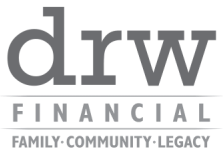|
For those with both the means and the desire to support one or more charitable projects or organizations, there are several strategies available. Choosing the right strategy or blend of strategies can help the donor optimize the impact of their gift for their particular situation. This post assumes that the donor has a charitable intent -- while there are some financial benefits to giving, the overall success of these strategies ultimately depend on a desire to support one or more charities. Gifts of appreciated stock (and other assets)Assets, like stock held in a taxable brokerage account, may appreciate over time and when they are sold, the difference between the "basis" and current value may represent a capital gain and therefore a tax liability. Under current laws, "short term" capital gains on assets held less than a year are taxed at the investor's marginal income tax bracket, and "long term" capital gains are generally taxed at lower rates, but still on a graduated schedule. Gifting an appreciated asset to a qualified charitable organization may provide a relative benefit to the donor versus "writing a check" from cash for a similar value donation.
And even those who do not itemize may have the opportunity to deduct up to $300 of giving. This post describes the 2020 version of this rule, and for 2021 the rule is expanded to allow households filing "jointly" to deduct up to $600. Gifts from an IRA - the "QCD"Traditional IRAs -- retirement accounts funded by "pre tax" contributions and that deferred taxes on growth and income over the years -- often represent a significant portion of a donor's accumulated wealth. But just as in the example above, actually accessing that wealth comes with a tax liability. Every dollar withdrawn from a traditional tax deferred retirement account in retirement adds to the investor's income for the year, and is therefore subject to their marginal income tax bracket. For people who happen to have relatively high social security benefits, or pension income, etc. their marginal income tax bracket in retirement may be quite high. Under current tax law, donors over the age of 70.5 may choose to donate to a qualified charity directly from their IRA via what is called a "qualified charitable distribution". An aggregate amount up to $100,000 per donor may be excluded from their taxable income for the year.
The QCD provision is one that has come and gone in tax law in recent years, and the SECURE Act made changes to both RMD rules and age restrictions on IRA contributions that may make the QCD less attractive for certain donors. "Planned giving"This is a sort of "catch all" for gifts to charities made via estate planning tools. Many donors reserve their largest gifts to be part of their estate, leaving money to one or more charities after their death. In some cases, planned gifts may have multiple stages, with some parts beginning during the donor's life. This is an intentionally minimal treatment of the "planned giving" space; the details and implementation of planned giving strategies can become very complicated, very quickly:
Planned giving can have meaningful impacts for both the donor and the recipient organizations, but also require a level of sophistication by all involved parties. Donor Advised Funds & Community FoundationsIn some cases, a donor's capacity and philanthropic intent coincide, but their ultimate goal for impact is not yet resolved. In these cases, it may make sense to use a "donor advised fund". There are national DAF programs run by financial institutions like Fidelity and Vanguard, and many regions also have local options like community foundations. In general terms, a donor may choose to make a large gift to a DAF in a given year, and then "advise" on the further distribution of those funds to one or more charities over time. This approach may be especially useful for donors looking to "bunch" their deductions in a given year to make itemized deductions possible or more attractive; DAFs may also be a handy intermediary for making gifts on to charities with less sophisticated in-house capabilities. For example, a given charity may not be set up to accept gifts of appreciated stock, so a donor may gift the stock to a DAF and then ask the DAF to make a gift of cash to the target charity. It is important to note here that the gift to the DAF or community foundation is "complete", meaning that the donor has no legal right to the further use of the funds. They are allowed only to "advise" on their preference for how and when the funds are distributed. Get good, tailored adviceThis blog post is not intended as tax or legal advice. David and DRW Financial have a philanthropic planning niche, and we care a great deal about part of the financial advice space, but every donor's situation is unique and their particular tax and planning needs must be considered in context. There are various limits on charity related tax deductions and specific rules that may make a given strategy more or less attractive for a given donor.
Before taking action, donors may wish to speak with a qualified tax professional, trust & estate lawyer, financial planner, or charitable advisor. Comments are closed.
|
AuthorDavid R Wattenbarger, president of DRW Financial Archives
June 2022
Categories |

 RSS Feed
RSS Feed
